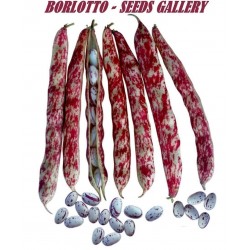Menu
-
MenuНазад
- Home
-
Категории
-
-
Категории
-
Растительные Семена
-
Сорта по стране
- Сорта из Армении
- Сорта из БиГ
- Сорта из Хорватии
- Сорта из Франции
- Сорта из Германии
- Сорта из Греции
- Сорта из Венгрии
- Сорта из Индии
- Сорта из Италии
- Сорта из Японии
- Сорта из Северной Македонии
- Сорта из Перу
- Сорта из россии
- Сорта из Сербии
- Сорта из Словении
- Сорта из Испании
- Сорта из Тайланда
- Сорта из Турции
- Сорта из США
- Семена томатов
- Семена кукурузы
- Семья тыквы
- Бобовая семья
- Семена огурца
- Семена перца
- Морковная семья
- Луковая семья
- Семена салата
- Картофельная семья
- Капустная семья
- Семена редьки
- Семья свеклы
- Семена Aрбуза
- Семена Дыни
- Цветная капуста Семена
- Подсолнечное семейство
-
Сорта по стране
- Фруктовые Семена
- Семена Перец Чили - Habanero
- Лекарственные травы Семена
- Вьющиеся растения семена
- Деревья Бонсай Семена
- Пальмовые семена
- Семена декоративных трав
- Семена табака
-
Растительные Семена
-
-
-
-
- НОВЫЕ ПРОДУКТЫ
- Доставка - Оплата
- Регистрация
- FAQ
Последние отзывы к продукту
Out of the two seeds, one germinated and the other one was dead and floatin...
От
 Riikka H на 07/03/2024
Riikka H на 07/03/2024
Проверенная покупка
Товаров: 77.
Показано 16-30 из 77
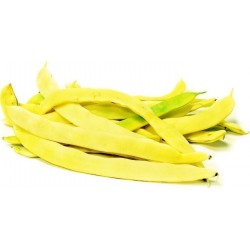
Bush Bean Seeds SUPERNANO...
Цена
1,85 €
(SKU: VE 136 (4,5g))
Seeds Gallery EU,
5/
5
<h2><strong>Bush Bean Seeds SUPERNANO GIALLO</strong></h2>
<h2 class=""><span style="color: #ff0000;"><strong>Price for Package of 10 (4,5g) seeds.</strong></span></h2>
<p>This is considered the finest of the golden yellow bush Romano/Marconi beans, and something of a 'bush' version of Marvel of Venice. Black seeded. Strong growth in nicely compact plants, rich flavor, smooth texture. Sweet and tender.</p>
<p>Botanical Name: Phaseolus vulgaris</p>
<p>Est. Maturity: 59 days</p><script src="//cdn.public.n1ed.com/G3OMDFLT/widgets.js"></script>
VE 136 (4,5g)

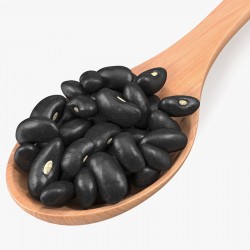
BLACK TURTLE BEAN Seeds
Цена
1,55 €
(SKU: VE 52 (4g))
Seeds Gallery EU,
5/
5
<h2 class=""><strong>BLACK TURTLE BEAN Seeds</strong></h2>
<h2 class=""><span style="color: #ff0000;"><strong>Price for Package of 20 (3,5g) seeds.</strong></span></h2>
<p>The black turtle bean is a small, shiny variety of common beans (Phaseolus vulgaris), especially popular in Latin American cuisine, though it can also be found in Cajun and Creole cuisines of south Louisiana. Black beans (and all common beans) are native to the Americas, but have been introduced around the world. They are also used in Punjabi cuisine. In Punjabi, they are known as maa ki daal, but are used interchangeably with vigna mungo in countries such as the USA . They are often called simply black beans (frijoles negros, zaragoza, judía negra, poroto negro, caraota o habichuela negra in Spanish, and feijão preto in Portuguese), although this can cause confusion with other black beans.</p>
<p> </p>
<p><strong>Background</strong></p>
<p>The black turtle bean has a dense, meaty texture, which makes it popular in vegetarian dishes, such as frijoles negros and the Mexican-American black bean burrito. It is a very popular bean in various regions of Brazil, and is used in the national dish, feijoada. It is also a main ingredient of Moros y Cristianos in Cuba, is a must-have in the typical gallo pinto of Costa Rica and Nicaragua, is a fundamental part of pabellón criollo in Venezuela, and is served in almost all of Latin America, as well as many Hispanic enclaves in the United States. In the Dominican Republic cuisine, it is also used for a variation of the Moros y Cristianos simply called Moro de habichuelas negras. The black turtle bean is also popular as a soup ingredient. In Cuba, black bean soup is a traditional dish, usually served with white rice.</p>
<p> </p>
<p>It is also common to keep the boiled water of these beans (which acquires a black coloring) and consume it as a soup with other ingredients for seasoning (known as sopa negra, black soup), as a broth (caldo de frijol, bean broth) or to season or color other dishes (aforementioned gallo pinto, for example).</p>
<p> </p>
<p>Samples of black turtle beans were reported in 2006 to contain total anthocyanins in their dried seed coats of 0−2.78 mg/g.</p>
<script src="//cdn.public.n1ed.com/G3OMDFLT/widgets.js"></script>
VE 52 (4g)

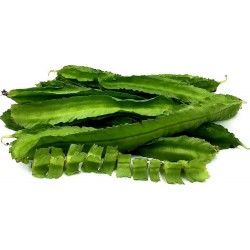
WINGED BEAN Seeds...
Цена
2,20 €
(SKU: VE 186)
Seeds Gallery EU,
5/
5
<meta http-equiv="Content-Type" content="text/html; charset=UTF-8" />
<div id="idTab1" class="rte">
<h2 id="short_description_content"><strong>WINGED BEAN Seeds (Psophocarpus tetragonolobus)</strong></h2>
<h2><span style="color: #f70000;"><strong>Price for Package of 5 seeds.</strong></span></h2>
<p>The winged bean (Psophocarpus tetragonolobus), also known as the Goa bean, asparagus pea, four-angled bean, four-cornered bean, Manila bean, Mauritius bean, and winged pea, is a tropical legume plant native to New Guinea. It grows abundantly in hot, humid equatorial countries, from the Philippines and Indonesia to India, Burma, Thailand and Sri Lanka. It is widely known, yet grown on a small scale in Southeast Asia and Papua New Guinea. Winged bean is well-recognized by farmers and consumers in the Asian region for its variety of uses and disease tolerance. Winged bean is nutrient-rich, and all parts of the plant are edible. Leaves can be eaten like spinach, flowers can be used in salads, tubers can be eaten raw or cooked, seeds can be used in similar ways as the soybean. The winged bean is an underutilized species but has the potential to become a major multi-use food crop in the tropics of Asia, Africa and Latin America.</p>
<p> </p>
<p>The winged bean is a species that belongs to the genus Psophocarpus, a genus of 6-9 varying species. Species in the Psophocarpus genus are perennial herbs grown as annuals. They are generally considered to be from Africa. Species in the Psophocarpus species are capable of climbing by twining their stems around a support. Species in the Psophocarpus genus have tuberous roots and pods with wings.</p>
<p> </p>
<p><strong>Appearance</strong></p>
<p>The winged bean plant grows as a vine with climbing stems and leaves, 3–4 m in height. It is an herbaceous perennial, but can be grown as an annual. It is generally taller and notably larger than the Common bean. The bean pod is typically 15–22 cm (6–9 in) long and has four wings with frilly edges running lengthwise. The skin is waxy and the flesh partially translucent in the young pods. When the pod is fully ripe, it turns an ash-brown color and splits open to release the seeds. The large flower is a pale blue. The beans themselves are similar to soybeans in both use and nutritional content (being 29.8% to 39% protein).</p>
<p> </p>
<p>There is abundant variation in the appearance of winged bean. The shape of its leaves ranges from ovate, deltoid, ovate-lanceolate, lanceolate and long lanceolate. The leaves of winged bean also vary in colour appearing as different shades of green.</p>
<p> </p>
<p>Stem colour is commonly green, but can vary from shades of green to shades of purple.</p>
<p> </p>
<p>Pod shape is most commonly rectangular, but can also appear flat. Pod colour may also vary from shades of cream, green, pink or purple. The exterior surface of the pod also varies in texture. Pods can appear smooth or rough depending on genotype. Seed shape is often round, but oval and rectangular seeds are also found. Seed colour changes based on environmental factors and storage conditions. Seeds may appear white, cream, brown or dark tan in appearance. The shape of winged bean tuberous roots also show variation.</p>
<p> </p>
<p><strong>Human consumption and nutrition</strong></p>
<p>One of the advantages of the winged bean is its ability to produce food from many different parts of the plant.</p>
<p> </p>
<p>Pods- Can be eaten unripe as a crunchy vegetable, cooked or raw</p>
<p> </p>
<p>Seeds- Require cooking for 2–3 hours to destroy trypsin inhibitors and hemagglutinins that inhibit digestion.[4] Seeds can be roasted like peanuts and have nutrient value comparative to soy beans. Average about 35% protein and 17% oil.</p>
<p> </p>
<p>Roots-Can be eaten raw or cooked. Tubers are high in protein and nutrient rich. Tuberous roots have 20% protein, which is much higher than other edible roots.</p>
<p> </p>
<p>Leaves and Flowers- Can be eaten raw or cooked. Flowers and leaves also have a high protein content at 10-15%.</p>
<p> </p>
<p><strong>Germination</strong></p>
<p>Winged bean is a self-pollinating plant but mutations and occasional outcrossing, may produce variations in the species. The pretreatment of winged bean seeds is not required in tropical climate, but scarification of seeds has shown to enhance the germination rate of seedlings. Seed soaking may also increase speed to germination, as is typical, and may be used in conjunction with scarification. Seedlings under natural field conditions have been reported to emerge between 5–7 days.</p>
<p> </p>
<p>It is recorded that winged bean can grow as fast or faster than comparative legume plants including soybeans. There is a 40-140 day period of germination from sowing to flowering of the winged bean plant. The pod reaches its full length and can be gathered to use as a vegetable 2 weeks after pollination. Three weeks after pollination, the pod becomes fibrous and after six weeks mature seeds can be harvested. Tuber development and flower production are dependent upon genotype and environmental factors. Some varieties of winged bean do not produce tuberous roots. The winged bean is a tropical plant, and will only flower when the day length is shorter than 12 hours, though some varieties have been reported as day-length neutral. All varieties of winged bean grow on a vine and must grow over a support. Some examples of support systems include: growing against exterior walls of houses, huts, buildings; supporting against larger perennial trees; stakes placed in the ground vertically; and structures made from posts and wires.</p>
<p> </p>
<p>Because the early growth of winged bean is slow, it is important to maintain weeds. Slow early growth makes winged bean susceptible to weed competition in the first 4–6 weeks of development. Khan (1982) recommends weeding by hand or animal drawn tractor two times before the support system of the winged bean is established.</p>
<p> </p>
<p>Winged bean can be grown without added fertilizer as the plant has a bacterium on the nodules of the roots that fixes nitrogen and allows the plant to absorb nitrogen. Factors that influence nitrogen fixation include, Rhizobium strain, interactions between strain and host genotype, available nutrients and soil pH.</p>
<p> </p>
<p><strong>Climate</strong></p>
<p>Winged bean thrives in hot weather and favours humidity, but it is an adaptable plant. It is reported that the winged bean can adjust to the climate of the equatorial tropics. Winged bean production is optimal in humidity, but the species is susceptible to moisture stress and waterlogging. Ideal growing temperature is reported to be 25 degrees Celsius. Lower temperature is reported to suppress germination, and extremely high temperatures are detrimental to the yield of the plant.</p>
<p> </p>
<p>Moderate variations in the growing climate of winged bean can result in variations in yield. It is reported than growing winged bean in lower than favourable temperatures can increase tuber production. It is also reported that leaf expansion rate is higher in a warmer climate. In addition to adequate temperature, winged bean requires sufficient soil moisture at all stages of growth to produce high yields. Although the winged bean plant is indigenous to the humid tropics, it is possible for the plant to succeed in drier climate with plenty of irrigation. Success has been noted when the maturity of the plant and the drier part of the growing season correspond.</p>
<p> </p>
<p>The hot, humid, and relatively wet summers of the Mid-Atlantic/Northeast are sufficient to raise the plant to crop, though the shorter growing season and day-length flowering issues will restrict the timing and amounts of yields.</p>
<p> </p>
<p><strong>Uses</strong></p>
<p>This bean has been called the "one species supermarket" because practically all of the plant is edible. The beans are used as a vegetable, but the other parts (leaves, flowers, and tuberous roots) are also edible. The tender pods, which are the most widely eaten part of the plant (and best eaten when under 1" in length), can be harvested within two to three months of planting. The flowers are often used to color rice and pastries. The flavor of the beans has a similarity to asparagus. The young leaves can be picked and prepared as a leaf vegetable, similar to spinach. The roots can be used as a root vegetable, similar to the potato, and have a nutty flavor; they are also much richer in protein than potatoes. The dried seeds can be useful as a flour and also to make a coffee-like drink. Each of these parts of the winged bean provide a source of vitamin A, vitamin C, calcium, iron, and other vitamins. The seeds contain 35% protein and 18% oil.</p>
<p> </p>
<p><strong>Potential</strong></p>
<p>The winged bean is rich in protein and tocopherol, an antioxidant that increases vitamin A use in the body (National Research Council (U.S), 1975). Its ability to grow in heavy rainfall makes the species a good candidate to adequately nourish the people of tropical equatorial countries in Africa. The wing bean can also be used to produce winged bean milk made from water, winged beans, and emulsifier. Winged bean milk has similar characteristics as soymilk without the same bean-rich flavour. Winged bean has also been reported as an effective remedy for smallpox and as a cure for vertigo in Malaya.</p>
<p> </p>
<p>The winged bean also provides many opportunities for economic benefit. Many parts of the winged bean can be sold. Mature seeds can bring in a high price . There is evidence of smoked pods, uncooked tubers, cooked tubers, dry seeds, and leaves being sold in domestic markets in South East and South Asia. Winged bean also has the potential to be used as animal feed for livestock and poultry. The winged bean also has the potential to be used as a replacement for fish meal used to raise African catfish (Clarias gariepinus), a highly valued food fish in Africa. Feeding fish represents a large portion of operating cost for fish farmers and fishmeal is scarce and high-priced. Winged bean can be used as the primary protein source for fish feed to reduce farmer dependence on fish meal availability.</p>
<p> </p>
<p>Winged bean also shows potential as a cover crop and a restorative crop. Planting winged bean uniform with the ground can reduce weeds and function well as a cover crop. The winged bean can also function effectively as a restorative crop that can improve nutrient poor soil with nitrogen when it is turned over into the soil.</p>
</div>
VE 186 (5 S)

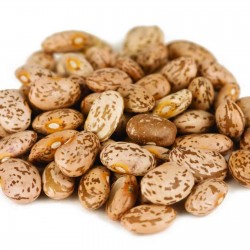
Pinto Bean Seeds (Phaseolus...
Цена
2,00 €
(SKU: VE 141 (8g))
Seeds Gallery EU,
5/
5
<div id="idTab1" class="rte">
<h2 id="short_description_content"><strong>“Pinto” Bean Seeds (Phaseolus vulgaris)</strong></h2>
<h2 class=""><span style="color: #ff0000;"><strong>Price for Package of 20 seeds.</strong></span></h2>
<p>The pinto bean is a variety of common beans (Phaseolus vulgaris). It is the most common bean in the United States[1] and northwestern Mexico,[2] and is most often eaten whole in broth or mashed and refried. Either whole or mashed, it is a common filling for burritos. The young pods may also be harvested and cooked as green pinto beans.</p>
<p>In Spanish, they are called frijol pinto, literally "speckled bean", and in South America it is known as the "poroto frutilla", literally "strawberry bean". In Portuguese, they are called feijão carioca in Brazil (literally "carioca bean") and feijão catarino in Portugal. It is named for its mottled skin (compare pinto horse), hence it is a type of mottled bean.</p>
<p>This is the bean most commonly used for refried beans (fresh or canned) and in many dishes. Rice and pinto beans served with cornbread or corn tortillas are often a staple meal where meat is unavailable; the amino acids in this combination make it a complete protein source. This variety is often used in chili con carne, although the kidney bean, black bean, and many others may also be used in other locales.</p>
<p>Pinto beans are commonly eaten beans in Brazilian cuisine (legumes, mainly common bean, are a staple food everywhere in the country, cultivated since 3000 BCE, along with starch-rich foods, such as rice, manioc, pasta and other wheat-based products, polenta and other corn-based products, potatoes and yams).</p>
<p>In the southeastern part of the United States, pinto beans were once a staple of the people, especially during the winter months. Some churches in rural areas still sponsor "pinto bean suppers" for social gatherings and fund raisers.</p>
<p>The alubia pinta alavesa, or the "Alavese pinto bean", a red variety of the pinto bean, originated in Añana,[3] a town and municipality located in the province of Álava, in the Basque Country of northern Spain. In October, the Feria de la alubia pinta alavesa (Alavese pinto bean fair) is celebrated in Pobes.</p>
</div><script src="//cdn.public.n1ed.com/G3OMDFLT/widgets.js"></script>
VE 141 (8g)

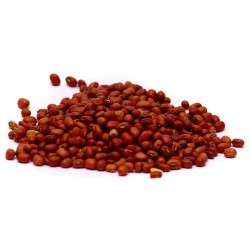
Small Mexican red beans Seeds
Цена
1,45 €
(SKU: VE 143 (2g))
Seeds Gallery EU,
5/
5
<div id="idTab1" class="rte">
<h2><strong><em><span style="text-decoration: underline;" class="">Small Mexican red beans Seeds (Phaseolus vulgaris)</span></em></strong></h2>
<h3><span style="color: #ff0000;"><strong>Price for Package of 10 seeds.</strong></span></h3>
<p>Small Red Beans (Phaseolus vulgaris) are a plump, round bean with a deep brick red color. This bean is about 1/2" long with a mild flavor and firm texture and holds its shape well. Small Red Beans are also know as Habichuelas and Habas Pequenos Colorados. This is a bush bean rather than a vine bean. This is the bean which is famous in the Southern dish.</p>
</div><script src="//cdn.public.n1ed.com/G3OMDFLT/widgets.js"></script>
VE 143 (2g)


Сорт из Сербии

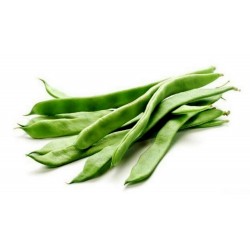
Семена фасоли Чер...
Цена
1,55 €
(SKU: VE 142 (6g))
Seeds Gallery EU,
5/
5
<h2><strong>Семена фасоли Чер Старозагорски (Cer Starozagorski)</strong></h2>
<h2><strong><span style="color: #ff0000;" class="">Цена за пакет из 15 (6g) семян.</span></strong></h2>
<p>Очень хорошая старая семейная реликвия Сербии с широкими плоскими зелеными стручками (длиной 15 см) и темными бобами. Очень рано нести, и бобы очень вкусные молодые и приготовленные целиком. Также используется в минестроне и для свежей фасоли, это сеяный сорт, высота 50 - 60 см. 58-72 дня.</p><script src="//cdn.public.n1ed.com/G3OMDFLT/widgets.js"></script>
VE 142 (6g)


Сорт из Индии
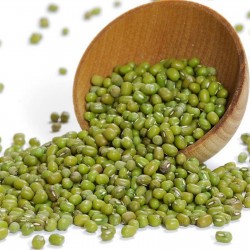
Семена Маш, бобы́ мунг...
Цена
1,80 €
(SKU: VE 140 (2g))
Seeds Gallery EU,
5/
5
<h2><strong>Семена Маш, бобы́ мунг (Vigna radiata)</strong></h2>
<h2><span style="color: #ff0000;" class=""><strong>Цена за пакет из 30 (2g) семян.</strong></span></h2>
<p><b>Маш</b>, или<span> </span><b>бобы́ мунг</b>, или<span> </span><i>люй-дау, фасоль азиатская, фасоль золотистая</i><sup id="cite_ref-2" class="reference">[2]</sup><span> </span>(лат. <span lang="la">Vigna radiata</span>) — однолетнее травянистое растение;<span> </span>вид<span> </span>рода<span> </span>Вигна<span> </span>семейства<span> </span>Бобовые;<span> </span>зернобобовая культура<span> </span>происхождением из<span> </span>Индии. Семена маленькие, зелёные, овальной формы. Термин «мунг» происходит из языка<span> </span>хинди.</p>
<p>Наряду с<span> </span>урдом<span> </span>и<span> </span>адзуки<span> </span>маш был перенесён из биологического рода<span> </span>Фасоль<span> </span>(<i><span lang="la">Phaseolus</span></i>) в близкородственный род<span> </span>Вигна<span> </span>(<i><span lang="la">Vigna</span></i>). В старых источниках именовался<span> </span><b>фасоль золотистая</b><span> </span>(<i>Phaseolus aureus</i>,<span> </span><i>Phaseolus radiatus</i>).</p>
<h2><span class="mw-headline" id="Использование_в_кулинарии">Использование в кулинарии</span></h2>
<p>Маш активно используется в<span> </span>китайской кухне, в которой носит название<span> </span><i>lǜ dòu</i><span> </span>(绿豆, дословно:<span> </span><i>зелёный боб</i>), но также в кухнях<span> </span>Туркменистана,<span> </span>Таджикистана,<span> </span>Узбекистана,<span> </span>Японии,<span> </span>Кореи,<span> </span>Индии<span> </span>и<span> </span>Юго-Восточной Азии. Маш обычно едят целиком, лущёным или пророщенным.<span> </span>Крахмал<span> </span>из маша используется для желирования и производства<span> </span>специального вида<span> </span>китайской лапши.</p>
<p>В узбекской и<span> </span>таджикской кухне<span> </span>известно блюдо под названием<span> </span><i>маш-кичири</i>, или<span> </span><i>маш-шавля</i>, являющее собой кашу из смеси риса и нелущёного маша с использованием растительного масла, в это блюдо по желанию добавляют также мясо (говядину, баранину), незрелые абрикосы (урюк) по сезону, а также курдюк (узб.<span> </span><i>думба</i>). Таджики и узбеки также готовят из маша густой суп «маш-хурда».</p>
<h3><span id=".D0.9B.D1.83.D1.89.D1.91.D0.BD.D1.8B.D0.B9_.D0.BC.D0.B0.D1.88"></span><span class="mw-headline" id="Лущёный_маш">Лущёный маш</span></h3>
<p>Лущёный маш (после удаления зелёной оболочки) имеет светло-зелёный цвет и известен в<span> </span>индийской кухне<span> </span>как<span> </span><i>дал</i>, или<span> </span><i>дхал</i>. Из дала, в частности, готовят традиционное индийское блюдо, носящее то же название<span> </span><i>дхал</i>, производят пасту (часто используемую в качестве начинки), десерты, а также главное блюдо<span> </span>аюрведической<span> </span>кулинарии —<span> </span>кичари.</p>
<h3><span id=".D0.A0.D0.BE.D1.81.D1.82.D0.BA.D0.B8"></span><span class="mw-headline" id="Ростки">Ростки</span></h3>
<p>Ростки<span> </span>маша — типичный компонент<span> </span>азиатской кухни. Маш легко<span> </span>прорастает<span> </span>в течение суток (в соответствующих условиях). Перед проращиванием маш рекомендуется тщательно промывать: тёплая, влажная среда проращивания создаёт идеальные условия для размножения болезнетворных<span> </span>бактерий<sup id="cite_ref-3" class="reference">[3]</sup>.</p>
<h3><span id=".D0.A4.D1.83.D0.BD.D1.87.D0.BE.D0.B7.D0.B0"></span><span class="mw-headline" id="Фунчоза">Фунчоза</span></h3>
<div class="hatnote">Основная статья:<span> </span><b>Стеклянная лапша</b></div>
<p>Из<span> </span>крахмала<span> </span>маша в<span> </span>китайском мире<span> </span>готовят лапшу под названием «фэньсы», или «фунчоза». Такая лапша имеет в разрезе круглое сечение; диаметр разнится. Продаётся в сушеном виде, причём в России и на Украине — зачастую под видом<span> </span>рисовой<span> </span>лапши или вермишели. Используется в супах, салатах, жареных во фритюре блюдах. Своё название «стеклянная лапша» получила из-за полупрозрачного вида, который приобретает после варки.</p><script src="//cdn.public.n1ed.com/G3OMDFLT/widgets.js"></script>
VE 140 (2g)


Гигантское растение (с гигантскими плодами)

Сорт из Греции

Гигантские семена белой...
Цена
1,85 €
(SKU: VE 221)
Seeds Gallery EU,
5/
5
<h2 class=""><strong>Гигантские семена белой фасоли Fasolia Gigantes</strong></h2>
<h2><span style="color: #ff0000;"><strong>Цена за пакет из 5 семян.</strong></span></h2>
<p>Гигантская белая фасоль - это традиция приготовления множества различных блюд, таких как суп из бобов, запеченные бобы в духовке (масляные бобы), греческий салат и т. Д. Несомненно, они полезны для здоровья, являются натуральной пищей и выгодно размещаются в Средиземноморская диета.</p>
<p>Традиционно, гигантские белые бобы подаются как мезе вместе с другими гарнирами. Однако это блюдо достаточно наполнено, чтобы его можно было съесть на обед. Этот сытный мезе популярен в холодную осень и зимние месяцы. Как и во многих греческих блюдах, хлеб используется для окунания в томатный соус.</p>
<p>В целом, Giant White Beans - это здоровая и питательная пища. Это богатый источник антиоксидантов из помидоров и клетчатки из других овощей, а также подходит для вегетарианцев и веганов, если исключить колбасу и сыр.</p>
<p>Эти бобы 100% натуральные, это не гибридный или мутантный продукт.</p><script src="//cdn.public.n1ed.com/G3OMDFLT/widgets.js"></script>
VE 221


Сорт из Сербии
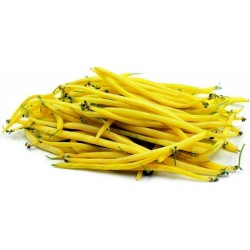
Dwarf Bean Seeds ’Maxidor’
Цена
1,50 €
(SKU: VE 57 (7.5g))
Seeds Gallery EU,
5/
5
<div id="idTab1" class="rte">
<h2><strong>Dwarf Bean Seeds ’Maxidor’</strong></h2>
<h2 class=""><span style="color: #ff0000;"><strong>Price for Package of 20 (7g) seeds.</strong></span></h2>
<div>Dwarf bean, with rounded, yellow, stringless pods that can be used in a fresh, canned or frozen state.</div>
<div>The beans are white and ovoid-shaped.</div>
<div>Plant height: 50 - 55cm.</div>
<div>Vegetation period: 54 - 57 days.</div>
<div>Minimum temperature for germination:180C</div>
<div>Bean pod color: yellow</div>
<div>Bean pod length: 13 - 15cm</div>
<div>Pod thickness: 0,9 - 1,1cm</div>
<div>Cultivation method: direct seeding.</div>
<div>Cultivated ground: open field, protected crops</div>
</div><script src="//cdn.public.n1ed.com/G3OMDFLT/widgets.js"></script>
VE 57 (7.5g)

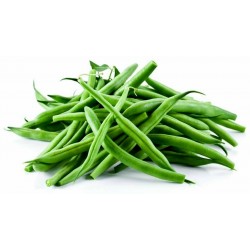
Зеленая фасоль Fasold семена
Цена
1,95 €
(SKU: VE 154 (3,5g))
Seeds Gallery EU,
5/
5
<h2>Зеленая фасоль Fasold семена (Phaseolus vulgaris)</h2>
<h2><span style="color:#ff0000;">Цена за пакет из 10 семян.</span></h2>
<p>Ранний урожай Скалолазание «Фасольд» несет декоративные лиловые цветы, за которыми следуют огромные урожаи превосходно ароматизированных французских бобов. Длинные, мясистые, безструнные стручки производятся в течение длительного периода и медленно развиваются семена. Имея менее энергичную полускальную привычку, этот сорт идеально подходит для выращивания под стеклом для самых ранних культур.</p>
<p>Высота: 180 см (70 ”).</p>
<p>Распространение 30 см (12”).</p>
VE 154 (3,5g)


Разнообразие из Италии
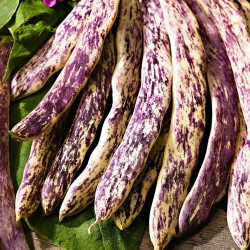
Bean Seeds Merveille de...
Цена
2,50 €
(SKU: VE 138 (3g))
Seeds Gallery EU,
5/
5
<div id="idTab1" class="rte">
<h2 id="short_description_content"><strong>Vegetable Bean Seeds Merveille de Piemonte</strong></h2>
<h2 class=""><span style="color: #ff0000;"><strong>Price for Package of 10 (3g) seeds.</strong></span></h2>
<p>A spectacular French Bean that loses its purple markings in the pan and turns green. These long beans (approx. 16-20 cm) taste terrific! They taste great as a cooked dry bean too!</p>
<p>So-called 'stringless' French Beans are considered the tastiest. It is actually hard to find them with 'string' nowadays as most modern cultivars are stringless.</p>
<p> </p>
<p>There are also yellow French Beans which a called Butter Beans when dried - not surprisingly because of the colour. They have a somewhat milder flavour than the green variety.</p>
<p> </p>
<p>French Beans are tastiest when eaten shortly after picking but they will last several days in the fridge. Chop into 2 cm pieces and steam or boil - but not too long as they are best when still crunchy. A short turn in the wok is great too! French Beans freeze well too although they may loose some of their crispiness. Chop finely and blanche them before freezing.</p>
<p><strong>Special Directions For Short Season Climates </strong></p>
<p><strong>SOWING: </strong>Plant outdoors in late spring after weather has warmed and all dan-ger of frost has passed. Plant 4 to 6 seeds per pole in hills. Plant seeds on their side covering seed with 1 to 1 1/2 inches of fine soil firmed down. </p>
<p><strong>SPACING:</strong> Provide 2 1/2 to 3 feet between hills. When planted in rows space rows 3 feet apart.</p>
<p><strong>THINNING:</strong> Thin to 3 strongest plants per pole in hills, when they are about 4 inches tall. Thin to 4 to 6 inches apart in rows.</p>
<p><strong>GERMINATION: </strong>1 to 2 weeks depending upon soil and weather conditions. Keep soil moderately moist during germination.</p>
</div><script src="//cdn.public.n1ed.com/G3OMDFLT/widgets.js"></script>
VE 138 (3g)


Разнообразие из Италии
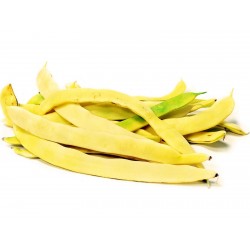
Bean Seeds 'Marvel of Venice'
Цена
1,25 €
(SKU: VE 169 (3.5g))
Seeds Gallery EU,
5/
5
<div id="idTab1" class="rte">
<h2><span style="text-decoration:underline;"><em><strong>Bean Seeds 'Marvel of Venice' (Phaseolus vulgaris)<br /></strong></em></span></h2>
<h2><span style="color:#ff0000;"><strong>Price for Package of 10 seeds.</strong></span></h2>
<div>
<div><span>The Marvel of Venice bean is produced on a large climbing vine that creates long slender bean pods. The outer skin of the Marvel of Venice bean ranges from a light to honey yellow color and can be from seven to ten inches in length. Inside it contains petite beans which depending upon variety can be black or white in color. When young the bean pod is edible in its entirety and offers a sweet bean flavor and tender yet meaty texture. Look for fresh beans whose pods are firm and unblemished, beans should be crisp and snap when you break off the tip of the pod. </span><br /><h2>Seasons/Availability</h2>
<span>Marvel of Venice beans are available in the summer and early fall months. </span><br /><h2>Current Facts</h2>
<span>The Marvel of Venice bean, botanically known as part of Phaseolus vulgaris, is a romano type bean and a pole variety that grows in a vining fashion. Romano beans are also further categorized as a European snap bean type and are thought to be a predecessor of the modern snap bean. An heirloom, Italian bean the Marvel of Venice bean is sought after for its superior fresh bean flavor which is rich and buttery. Romano type beans such as Marvel of Venice are unique among other beans and are recognizable by their meaty texture and flattened shape. </span><br /><h2>Nutritional Value</h2>
<span>Marvel of Venice beans contain a significant amount of vitamin C and also offer some protein, vitamin A, calcium, iron and fiber. </span><br /><h2>Applications</h2>
<span>Marvel of Venice beans can be used whole when fresh in both raw and cooked preparations. Additionally, bean pods can be left on the vine to fully mature and dry out then the inner beans removed and utilized as a dried or shelling bean. Marvel of Venice beans can be braised, steamed, simmered, grilled, deep-fried and sautéed. Add lightly cooked or raw beans to salads or serve alongside dips as a crudité. The beans offer a meaty texture when cooked and can stand up to prolonged cooking preparations making them an excellent addition to stews, soups or served braised as a side dish. Their flavor pairs well with tomatoes, garlic, shallots, fennel, lemon, dried red chile, olive oil, balsamic vinegar, fresh herbs, butter, pancetta, hazlenuts, pecorino and parmasean cheese. Beans will keep best if stored in a plastic bag, refrigerated and used within five to seven days. </span><br /><h2>Ethnic/Cultural Info</h2>
<span>Also known as Meraviglia di Venezia in its native Italy the Marvel of Venice is classically used there in the tomato sauce based dish, fagiolini al’uccelletto. Romano type beans such as Marvel of Venice are the preferred bean of Italian cuisine and appear in many summer and fall preparations. The Marvel of Venice bean’s popularity extends to France and Spain as well as to Austria and Germany where it is sold under the name Rheingold. </span><br /><h2>Geography/History</h2>
<span>Marvel of Venice beans are an heirloom romano variety bean believed to be native to Italy. Romano type beans are native to southern Europe and are known to be the snap bean of Europe. Be sure to provide adequate support when planting as the Marvel of Venice bean pods grow on vigorous vines that can climb up to seven feet of support trellis or poles. The white seeded variety is known to produce beans earlier in the season than the black seeded type. Like most beans they are not frost tolerant and prefer warm growing conditions with soil temperatures above sixty degrees. Plants can provide significant yields in ideal growing conditions and beans should be harvested frequently to prolong production. </span></div>
<div> </div>
<div><strong>GROWING TIP:</strong> All beans and peas are legumes and benefit from "inoculating" with rhizobacteria. These bacteria do the work of taking gaseous nitrogen from the air and "fixing" or concentrating it in pink root nodules which then slough off, adding nitrogen to the soil in a form other plants can take up as a nutrient. Inoculating your beans and peas will increase germination, and the health of your plants, helping them growing large roots and thus healthier plants. Growing pole beans with corn provides an extra shot of nitrogen to the corn, a wonderful natural symbiotic relationship that the Native Americans understood very well. You will see a big difference in overall results. Healthy legumes should also be turned under the soil when production ends as they are excellent green manure for your next crops.</div>
</div>
</div>
VE 169 (3.5g)

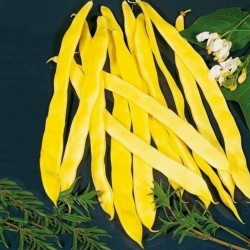
'Bush Blue Lake' Beans Seeds
Цена
2,20 €
(SKU: VE 137 (2,5g))
Seeds Gallery EU,
5/
5
<div id="idTab1" class="rte">
<div id="idTab1" class="rte">
<div id="idTab1" class="rte">
<h2><strong>Blue Lake Bush Beans Bean Seeds</strong></h2>
<h2><span style="color: #ff0000;"><strong>Price for Package of 10 (2,5g) seeds.</strong></span></h2>
<div>55 days. The unique flavor and slow fiber and seed development in the pod make this strain popular for fresh market or processing. Yellow, pods average 6 in./15 cm, dwarf bushy plants are tolerant to BV-1; NY-15.</div>
<div>SOWING RATE: 2 oz./57 g sows 18 ft./6 m of row; 1/2 lb./227 g sows 75 ft./23 m; 60-80 lbs./27-36 kg per acre depending on variety. Most growers plan for 100,000-105,000 live plants per acre by sowing 110,000-115,000 seeds per acre @ 90% germ.</div>
<div>CULTURE: Sow every 10 days - from May 20th. (use Captan treated seed for early sowings) providing the soil temperature is 60°F/16°C until July 30th. Untreated seed should not be planted until ground temperature reaches an average daytime temperature of 65?F/18?C (In our region - June 10th.). Granular Nature's Aid applied in the row will increase yields for both treated and untreated seed. Space seeds 2-4 in./5-10 cm apart, in rows 24-30 in./61-76 cm apart. Sow beans fairly shallow - about 1 in./25 mm deep (1 1/2 in./3cm maximum). Most commercial growers fertilize before sowing. Smaller growers can apply after sowing in bands 2 in./5 cm deep, on each side of the seeded row. In either case, seed must not touch concentrated fertilizer.</div>
<div> </div>
<div>GERMINATION: Beans require a minimum soil temperature of 60°F/16°C and a maximum of 75°F/24°C. They will not germinate properly if planted too deeply or too early in cold wet ground.</div>
<div>CULTIVATION: Do not cultivate after a rain or too early in the morning when plants are wet. This causes bean rust, anthracnose or blight and helps to spread mosaic. Improper use of rotary hoes by the grower, can destroy 10% of the emerging crop.</div>
<div>INSECT DAMAGE: Watch out for ground hogs or woodchucks as the tender shoots emerge from the soil. Chief villain is the Mexican Beetle which can be controlled with Sevin or Malathion as it appears or dust with Rotenone. If you are organic, try planting marigolds between the rows or garlic in each hill of beans. As a last resort introduce praying mantis and hope they don't wander into your neighbor's fields for their next meal. 2 oz./57 g contains 150 - 200 seeds.</div>
<div> </div>
<div>MATURITY DATES: Since beans are very sensitive to cool soil temperatures, all our days to maturity are calculated from germination to harvest. Just like sweet corn, colder clay loam soils can delay emergence on earlier 47-54 day varieties, especially if you choose white seeded types. On sandy loam or gravel soils, where heat units are higher, the dates should be accurate. Allow 5-7 days more on cold, wet soils. Wet weather will cause runners.</div>
</div>
</div>
</div><script src="//cdn.public.n1ed.com/G3OMDFLT/widgets.js"></script>
VE 137 (2,5g)


Гигантское растение (с гигантскими плодами)

Сорт из Греции
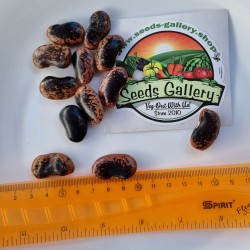
Fassolia Gigantes -...
Цена
2,45 €
(SKU: VE 220)
Seeds Gallery EU,
5/
5
<h2 style="font-size: 2rem;" class=""><strong>Fassolia Gigantes-Elefantes Kastorias Bean Seeds</strong></h2>
<h2 style="font-size: 2rem;" class=""><span style="color: #f80000;"><strong>Price for Package of 10 (20g) seeds.</strong></span></h2>
<div>Greek "Gigandes" beans for culinary use. The Greek giant beans, are a traditional Greek food, used in several Greek gourmet recipes, such as bean soup, baked beans in the oven (butter beans), Greek salad, etc. Undoubtedly they are a healthy, natural food and favorably place themselves in a Mediterranean diet.</div>
<div>Traditionally, gigandes plaki are served as a meze alongside other side dishes. However, this dish is filling enough to be eaten for lunch. This hearty meze is popular during the cold fall and winter months. As with many Greek dishes, bread is used to dip in to the tomato sauce drippings.</div>
<div>Overall, gigandes plaki is a healthy and nutritious food. It is a rich source for anti-oxidants from the tomatoes, and fiber from the other vegetables, and is suitable for vegetarians and vegans if the sausages and cheese are excluded.</div>
<div>These beans are 100% natural, this is not a hybrid or mutant product. </div>
<script src="//cdn.public.n1ed.com/G3OMDFLT/widgets.js"></script>
VE 220 (20g)





